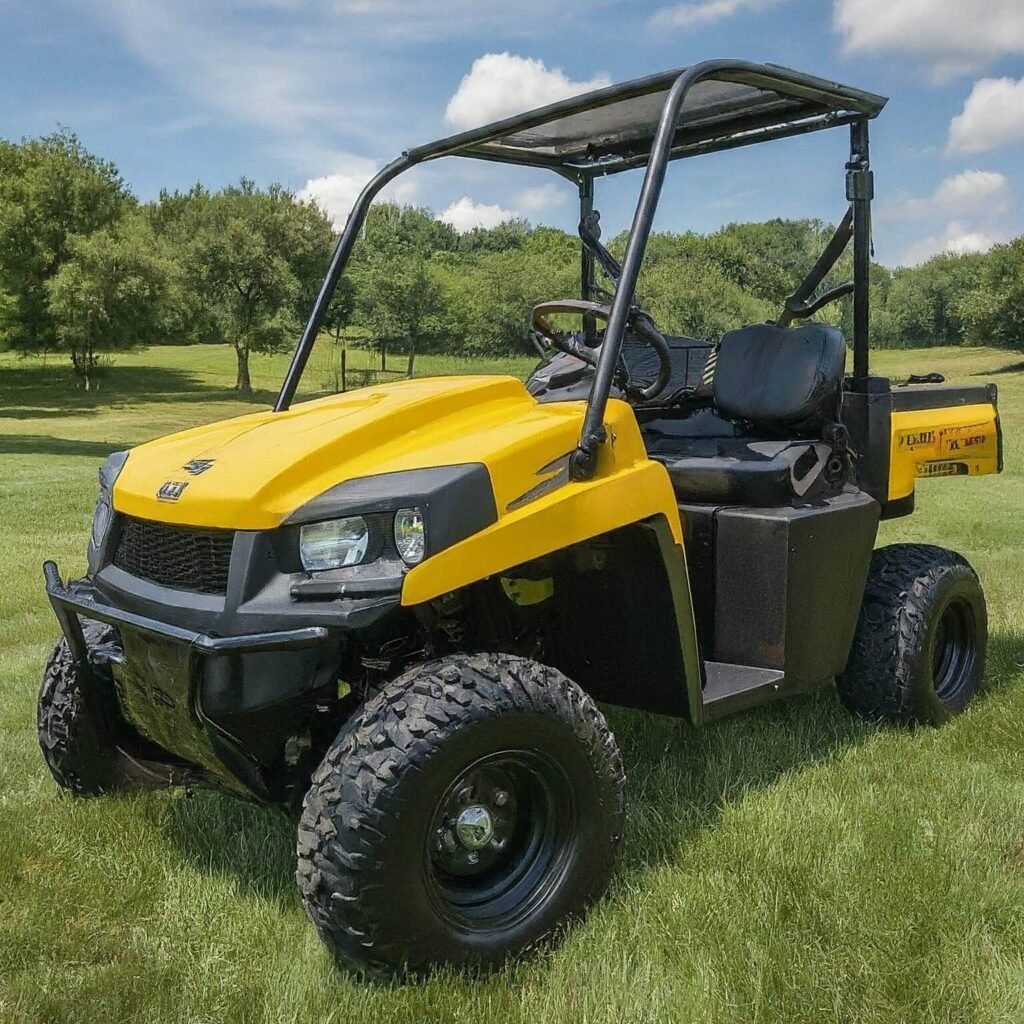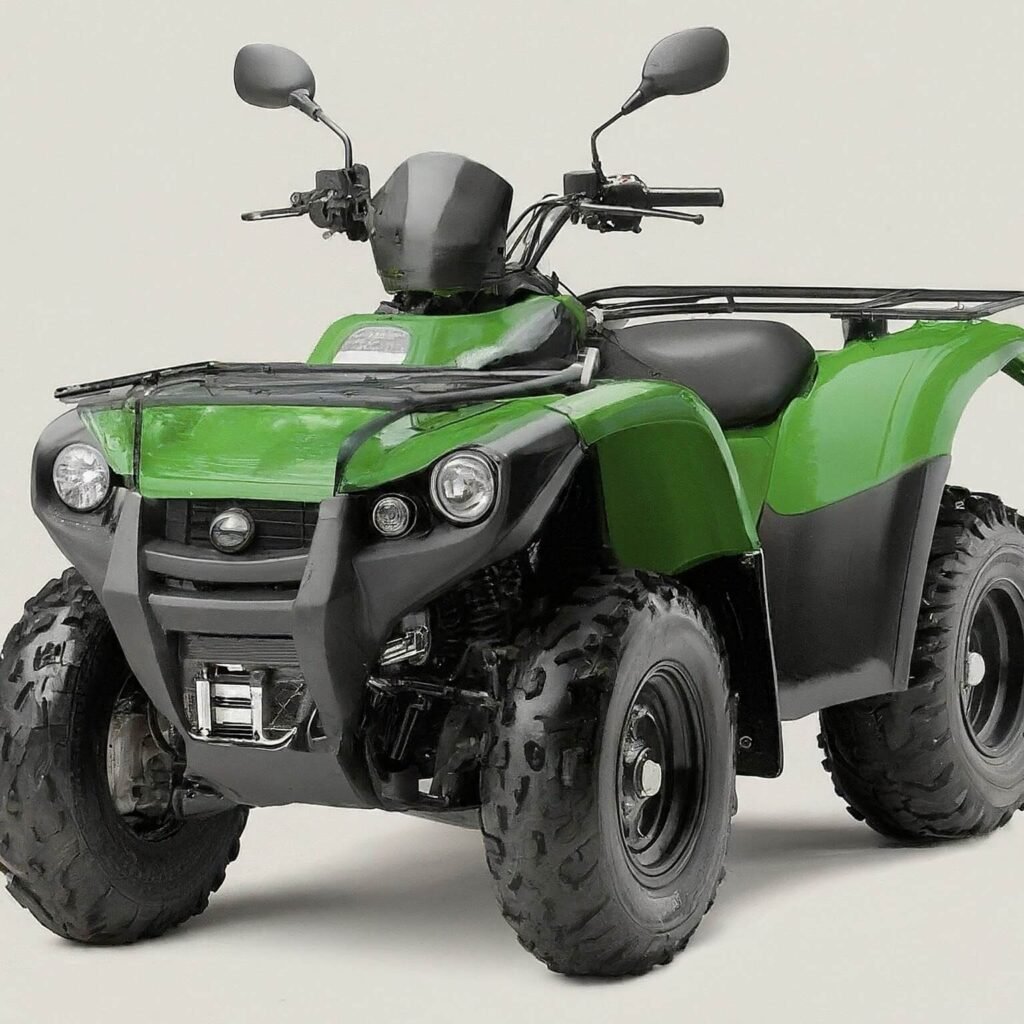The most common Kawasaki Voyager 1700 problems are starting issues, heat problems, hard-to-shift, clutch problems, brake issues, electrical problems, throttle problems, belt drive squeaking, headlight issues, death wobble, suspension adjustment issues, fuel pump problems, chrome glare issues, and accessory integration issues.
Here, we explore these issues in detail and provide easy solutions.
Kawasaki voyager 1700 problems and Solutions
Now, we will explore the most common Kawasaki 1700 Voyager problems with their easy solutions. Also explore the Kawasaki KFX 700 problems.
1. Starting Issues

Here are some Kawasaki 1700 voyager starting problems.
Battery Problems and Solutions
A weak or dead battery is one of the most frequent causes of starting issues in the Kawasaki Voyager 1700. If you notice your bike struggling to start or the lights dimming, it’s time to check the battery.
Ensure the battery terminals are clean and tightly connected. If the battery is old, consider replacing it with a new one.
A fully charged battery will have a voltage of around 12.6 to 12.8 volts. Using a multimeter can help you measure this accurately. Also explore the best offroad vehicles.
Starter Motor Troubleshooting
If the battery is in good condition, the next component to inspect is the starter motor. A faulty starter motor may click without turning the engine over or make no noise at all.
To test the starter motor, you can bypass the starter relay. If the engine cranks, the relay might be the issue. If not, the starter motor likely needs replacement.
It’s advisable to consult a professional mechanic for a thorough diagnosis.
Addressing Fuel Delivery Problems
Fuel delivery issues can also prevent your Kawasaki Voyager 1700 from starting. Ensure enough fuel is in the tank, and the fuel pump is functioning correctly.
Sometimes, fuel lines can get clogged or kinked, restricting fuel flow. Cleaning or replacing these lines can resolve the issue.
Additionally, check the fuel injectors for any blockages and clean them if necessary.
2. Heat Problems
The Voyager 1700 is known for its powerful 1700cc engine, which can generate significant heat. Riders often report excessive heat on their legs and thighs, making long rides uncomfortable.
This is primarily due to the engine’s proximity to the rider and inadequate heat dissipation mechanisms.
Additionally, the bike’s fairing can trap heat, exacerbating the problem.
Solutions
Installing heat deflectors is one of the most effective ways to combat heat problems. These deflectors redirect the hot air away from your legs, significantly reducing the discomfort.
Another solution is to use a heat shield or thermal tape on the exhaust pipes to lower the temperature around the rider’s position.
Additionally, wearing heat-resistant riding gear can provide an extra layer of protection.
3. Shifting Issues
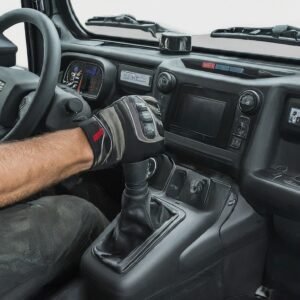
One of the most reported issues with the Kawasaki Voyager 1700 is difficulty shifting gears. Riders often experience hard shifting, making the gear lever challenging to move.
This can be due to several factors, such as improper clutch adjustment, worn-out clutch plates, or issues with the transmission fluid.
Another common problem is false neutrals, where the bike pops out of gear unexpectedly. This could be caused by worn gear dogs or an improperly adjusted shift linkage. Also explore the Kawasaki Brute Force 750 Problems.
Solutions
Regular maintenance is critical to preventing and solving shifting problems. Here are some practical solutions:
- Clutch Adjustment: Ensure that the clutch cable is correctly adjusted. A loose or tight clutch cable can significantly affect gear shifting.
- Clutch Plate Inspection: Check the clutch plates for wear and tear. Replacing worn-out plates can resolve hard-shifting issues.
- Transmission Fluid: Check and replace the transmission fluid regularly, as per the manufacturer’s recommendations. Clean fluid ensures smooth gear transitions.
- Shift Linkage Adjustment: Ensure the shift linkage is appropriately aligned and adjusted. This can help in avoiding false neutrals.
4. Clutch Problems
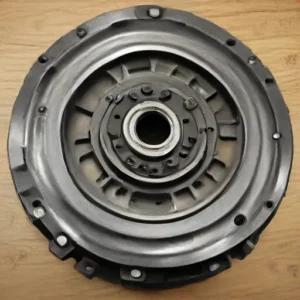
The Kawasaki Voyager 1700, while a reliable bike, exhibits a few clutch-related issues that riders should be aware of. Some of the most common problems include:
- Slipping Clutch: This issue typically occurs when the clutch fails to engage properly, causing a loss of power. It can be due to worn-out clutch plates or weak clutch springs.
- Hard Shifting: Riders often report difficulty shifting gears due to improper clutch adjustment or a need for clutch cable lubrication.
- Clutch Drag: This happens when the clutch does not fully disengage, causing the bike to creep forward even when the clutch lever is pulled in. Warped clutch plates or a misadjusted clutch lever can cause it.
Practical Solutions
Addressing these clutch problems is essential for maintaining the performance of your Kawasaki Voyager 1700. Here are some practical solutions:
- Regular Maintenance: Ensure the clutch plates and springs are checked regularly and replaced if necessary. Routine maintenance can prevent most clutch issues.
- Proper Adjustment: Adjusting the clutch lever and cable can solve problems with hard shifting and clutch drag. Ensure the free play in the clutch lever is within the manufacturer’s specifications.
- Quality Lubrication: Lubricating the clutch cable can significantly improve performance and prevent hard shifting.
5. Brake Problems
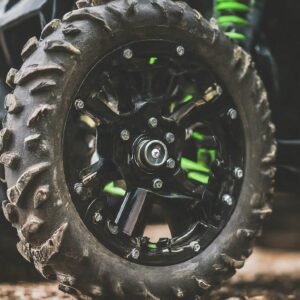
One of the most frequently reported issues with the Kawasaki Voyager 1700 is brake fade. Brake fade occurs when the brakes lose their effectiveness due to overheating. This can be particularly concerning during long rides or in stop-and-go traffic.
Another common problem is the spongy brake feel, which can be caused by air in the brake lines or deteriorating brake fluid.
Additionally, riders have reported issues with the rear brake locking up. This can be dangerous and is often caused by a malfunctioning brake caliper or improper adjustment.
Finally, uneven brake pad wear is another issue that can affect the braking performance and safety of your Voyager 1700. Also explore the Kawasaki Concours 1000 Problems.
Solutions
For brake fade, it’s essential to ensure your brake fluid is in good condition and at the correct level. Regularly flushing and replacing the brake fluid, especially if it’s old or contaminated, can help. Upgrading to high-temperature brake fluid can also be beneficial.
If you’re experiencing a spongy brake feel, bleeding the brake system to remove any air pockets is recommended. Ensuring the brake lines are in good condition and not leaking is also crucial.
Regarding the rear brake lockup, inspecting and, if necessary, replacing the brake caliper or adjusting the brake linkage can resolve this issue.
For uneven brake pad wear, regularly checking and replacing worn brake pads and ensuring that the brake rotors are not warped can help maintain even wear.
6. Electrical Issues
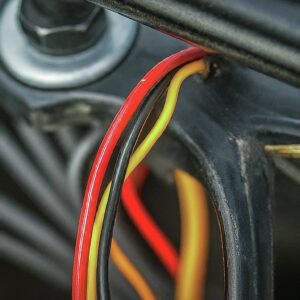
Here are some Kawasaki 1700 Voyager electrical problems.
Battery and Charging System
A frequent issue with the Kawasaki Voyager 1700 is related to the battery and charging system. Signs of a failing battery include dimming lights or difficulty starting the engine.
One way to diagnose this is to use a multimeter to check the battery voltage. Ideally, a healthy battery should read around 12.6 volts when the bike is off and between 13.5 and 14.5 volts when running.
If the readings are off, replacing the battery or checking the alternator and voltage regulator might be time.
Fuse Box and Circuit Breakers
Blown fuses are another common cause of electrical problems in the Kawasaki Voyager 1700. If certain electrical components, such as the headlights or indicators, stop working, inspect the fuse box.
Ensure that the fuses are intact and replace any that appear burnt out. It’s also a good idea to carry spare fuses during long rides to avoid being stranded.
Wiring and Connectors
Wiring issues can be more challenging to diagnose but are equally important. Loose or corroded connections can lead to intermittent electrical failures.
Regularly inspect the wiring harness for any signs of wear or damage. Cleaning the connectors and applying dielectric grease can help maintain a good electrical connection and prevent corrosion.
7. Throttle Problems

One of the most frequently reported throttle issues in the Kawasaki Voyager 1700 is throttle lag. This occurs when there is a delay between the rider twisting the throttle and the engine responding. This can be particularly frustrating and even dangerous when quick acceleration is needed.
Another common issue is a sticky throttle, where the throttle does not return smoothly to the idle position, causing unpredictable acceleration.
Diagnosing and Solving Throttle Problems
Proper diagnosis is the first step in solving throttle problems. If you experience throttle lag, it could be due to a number of factors, such as dirty throttle bodies or a malfunctioning throttle position sensor (TPS).
Cleaning the throttle bodies and checking the TPS can often resolve the issue. If the throttle is sticky, check the throttle cables for any signs of wear or damage and ensure they are properly lubricated. Also explore the Kawasaki Mule 2510 problems.
8. Belt Drive Squeaking
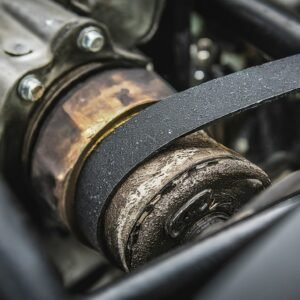
Squeaking noises from the belt drive can be attributed to several factors. The most common causes include:
- Misalignment: If the belt is not aligned correctly, it can cause friction and produce a squeaking noise. This misalignment can occur due to improper installation or wear and tear.
- Tension Issues: An over-tightened or under-tightened belt can also lead to squeaking. Ensuring the belt tension is within the manufacturer’s recommended range is essential.
- Wear and Tear: The belt and pulleys can wear down over time, resulting in noise. Regular maintenance and inspection can help identify these issues early.
Solutions
Here are some practical solutions to address the squeaking noise in your Kawasaki Voyager 1700 belt drive:
- Check and Adjust Alignment: Ensure the belt is correctly aligned with the pulleys. For alignment specifications, refer to the motorcycle’s manual or seek professional help if needed.
- Adjust Belt Tension: Use a belt tension gauge to check if the tension is within the recommended range. If not, adjust accordingly. This step is crucial in preventing both squeaking noises and potential belt damage.
- Inspect and Replace Worn Parts: Regularly inspect the belt and pulleys for signs of wear and tear. If you notice any damage, consider replacing the affected parts to avoid further issues.
9. Headlight Problems

One of the most frequent issues with the Kawasaki Voyager 1700’s headlight is dimming or flickering lights. This can often be traced to a weak battery or loose wiring connections. Sometimes, the headlight might not work due to a blown fuse or a faulty switch.
Another problem riders often need help with is the headlight lens becoming cloudy or yellowed over time. This can significantly reduce the brightness of the headlight, making nighttime riding more dangerous.
Effective Solutions
To address dimming or flickering headlights, check the battery and ensure that all wiring connections are secure.
If the problem persists, consider replacing the headlight bulb with a higher-quality or more powerful option. A multimeter can be handy for checking the voltage and ensuring everything is in working order.
If the headlight doesn’t turn on, inspect the fuse box for blown fuses and replace them as necessary.
Also, check the headlight switch and replace it if it’s faulty. If the lens is cloudy or yellowed, a headlight restoration kit can restore it to its original clarity.
10. Death Wobble
The death wobble in the Kawasaki Voyager 1700 can be attributed to several factors. One common cause is improper tire pressure. Tires that are not inflated to the recommended levels can lead to instability.
Another factor is worn-out or loose steering head bearings, which can cause the front end to shake.
Additionally, issues with the suspension, such as worn-out shocks or forks, can contribute to this problem.
Solutions
Start by checking and adjusting your tire pressure to address the death wobble. Ensure it matches the manufacturer’s specifications.
Next, inspect the steering head bearings for any wear or looseness. If necessary, tighten or replace them.
Additionally, evaluate the condition of your suspension components and replace any worn-out parts. Regular maintenance and timely replacements are vital in preventing the death wobble.
11. Voyager 1700 Suspension Adjustment Problems
One of the most frequent issues with the Kawasaki Voyager 1700 suspension is improper preload settings. This can lead to a harsh ride or bottoming out.
Another common problem is incorrect damping settings, which can cause the bike to feel either too stiff or too loose. Both issues can make your ride uncomfortable and potentially unsafe. Also explore the problems of Kawasaki Mule 4010.
Solutions
To address preload issues:
- Adjust the rear shock preload to match your weight and riding style.
- Use the adjuster knob located under the seat, turning it clockwise to increase preload and counterclockwise to decrease it.
- For damping problems, adjust the front and rear shock absorbers.
The front fork has a rebound damping adjuster; turn it clockwise to increase damping and counterclockwise to decrease it. For the rear shock, use the damping adjuster knob near the bottom of the shock absorber.
Expert Tips for Optimal Suspension
Consider your riding conditions to determine optimal suspension settings. A softer suspension setup can help absorb road imperfections during long-distance touring, while a stiffer setup is better for aggressive riding.
Regularly check and adjust your suspension settings, especially after significant changes in load or riding conditions. Consult your owner’s manual for detailed instructions, or seek professional help.
12. Fuel Pump Problems
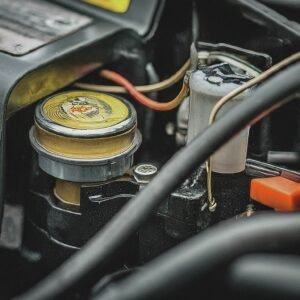
The Kawasaki Voyager 1700’s fuel pump is a crucial component that ensures the engine receives a steady fuel supply. Over time, several issues can arise, including:
- Fuel Pump Failure: This can occur due to wear and tear or contamination within the pump.
- Clogged Fuel Filter: A clogged filter can restrict fuel flow, causing performance issues.
- Electrical Issues: Faulty wiring or connectors can lead to inconsistent fuel pump operation.
Diagnosing Fuel Pump Issues
Identifying fuel pump problems early can save you from extensive repairs. Here are some signs to watch for:
- Engine Stalling: If your engine stalls frequently, it could indicate a failing fuel pump.
- Difficulty Starting: Trouble starting your bike may point to fuel delivery problems.
- Unusual Noises: A failing fuel pump might produce whining or humming sounds.
To diagnose these issues, consider using a fuel pressure gauge to check the fuel pressure, inspecting the fuel filter, and examining the wiring for any damage.
Solutions
Once you’ve identified the problem, you can take steps to resolve it:
- Replace the Fuel Pump: If your fuel pump is beyond repair, replacing it with a new one is the best solution.
- Clean or Replace the Fuel Filter: Regularly cleaning or replacing the filter can prevent clogging.
- Check Electrical Connections: Ensure all wiring and connectors are secure and corrosion-free.
13. Chrome Glare Problems
One common issue Kawasaki Voyager 1700 riders face is the glare from chrome parts. This can be particularly troubling during sunny days, leading to discomfort and distraction.
In my experience, chrome glare often affects the riding experience negatively, making it crucial to find practical solutions. Also explore the problems of Kawasaki Mule 3010.
Why Chrome Glare Occurs
Chrome, known for its shiny and reflective properties, enhances the aesthetic appeal of motorcycles like the Kawasaki Voyager 1700.
However, this feature causes glare when sunlight or artificial light hits the chrome surfaces at certain angles. The reflection can be intense, affecting visibility and causing eye strain.
Solutions
Several strategies can help you reduce or eliminate chrome glare on your Kawasaki Voyager 1700:
- Anti-Glare Coatings: Applying an anti-glare coating to the chrome surfaces can significantly reduce reflections. These coatings are designed to diffuse light, minimizing glare without compromising the bike’s look.
- Matte Covers: Another effective solution is to use matte covers or wraps on the chrome parts. Matte finishes do not reflect light as intensely as polished chrome, reducing glare.
- Adjust Riding Position: Sometimes, a simple adjustment in your riding position can help avoid the angles at which glare occurs. Experimenting with different postures can help you find a comfortable and glare-free position.
Use of Sun Visors: Wearing helmets with built-in or additional sun visors can help shield your eyes from glare, enhancing your overall riding experience.
14. Accessory Integration Problems
Here are some Kawasaki 1700 Voyager accessory integration problems.
Electrical Compatibility Issues
One of the frequent issues riders encounter is electrical compatibility. Adding new lights, GPS units, or audio systems can sometimes lead to electrical system overloads or malfunctions.
The Voyager 1700’s electrical system is designed to handle a specific load, and exceeding this can cause problems.
To avoid issues, always check the power requirements of new accessories and ensure they are compatible with the bike’s electrical system.
A dedicated accessory fuse block can help manage the load and prevent electrical failures. Also explore the problems of Kawasaki Mule SX.
Mounting and Fitment Challenges
Another common problem is finding the correct mounting hardware and ensuring a proper fit. Accessories like luggage racks, crash bars, and custom seats must be compatible with the bike’s frame and design.
Always opt for accessories specifically designed for the Kawasaki Voyager 1700 to solve this. Manufacturer-supplied mounting kits often provide the best fit and durability.
Consulting the user manual for installation guidelines can also help prevent fitment issues.
Interference with Stock Components
Integrating new accessories can sometimes interfere with the bike’s stock components. For example, adding a large windshield might obstruct the view of the dashboard or interfere with handlebar controls.
To address this, consider the placement and size of the accessories before installation. Make sure they do not hinder the motorcycle’s functionality or safety.
Testing the fit and making necessary adjustments can help avoid these interference issues.
Conclusion:
Following this guide lets you quickly eliminate the Kawasaki Voyager 1700 problems because I provide complete details.
